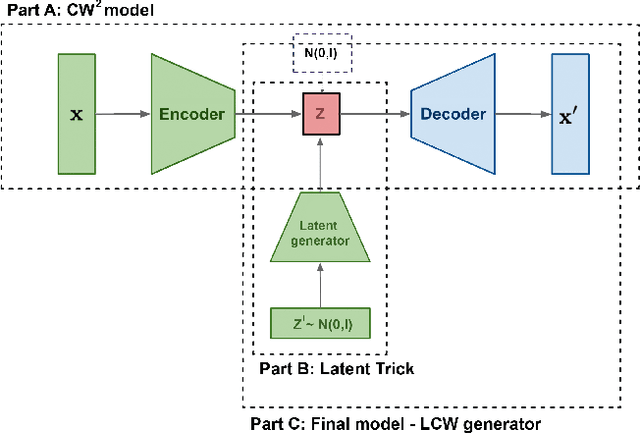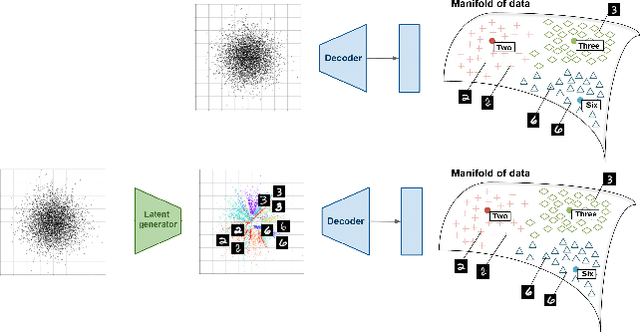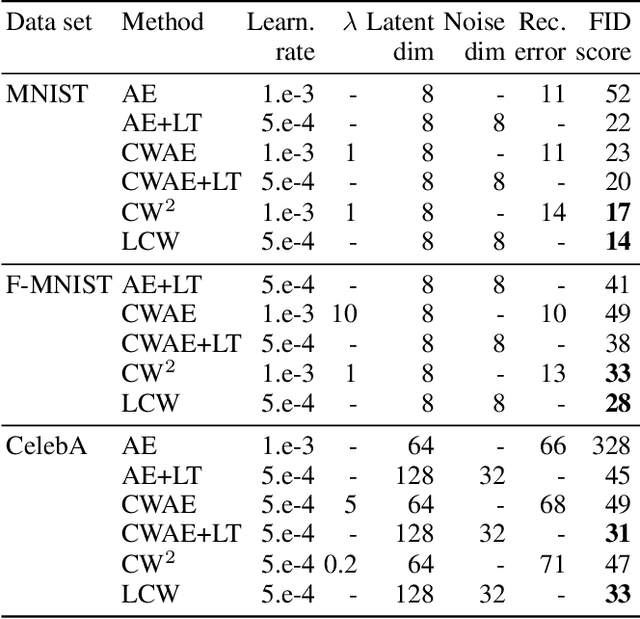Generative models with kernel distance in data space
Paper and Code
Sep 15, 2020



Generative models dealing with modeling a~joint data distribution are generally either autoencoder or GAN based. Both have their pros and cons, generating blurry images or being unstable in training or prone to mode collapse phenomenon, respectively. The objective of this paper is to construct a~model situated between above architectures, one that does not inherit their main weaknesses. The proposed LCW generator (Latent Cramer-Wold generator) resembles a classical GAN in transforming Gaussian noise into data space. What is of utmost importance, instead of a~discriminator, LCW generator uses kernel distance. No adversarial training is utilized, hence the name generator. It is trained in two phases. First, an autoencoder based architecture, using kernel measures, is built to model a manifold of data. We propose a Latent Trick mapping a Gaussian to latent in order to get the final model. This results in very competitive FID values.
 Add to Chrome
Add to Chrome Add to Firefox
Add to Firefox Add to Edge
Add to Edge